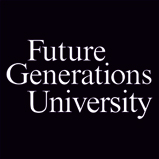“How can you major in life? How can you major in the beauty of the world? You have to choose a major to get a degree, but those were the things I wanted to study. . . My interests are in the beauty and diversity of nature, and having my Ph.D. in zoology was a stepping stone that gave me access to different areas of the world.”
 |
| Trinidad Motmot |
Dr. Robert L. Fleming, Future Generations Professor of Natural History, strayed from a conventional academic career in 1966. After three years of teaching biology at a high school in India, he decided he would make the entire world his classroom. “It’s confining to spend so much time in the classroom teaching and in making and grading tests and keeping people in line,” Dr. Fleming explained. In 1970, he founded a sole proprietorship, Nature Himalayas, which would bring the eager students he sought directly to him over the next four decades. Through Nature Himalayas, Dr. Fleming has organized and led hundreds of outings around the world, which have allowed him to simultaneously teach and research the natural history and rich cultural heritage of places like Borneo, Indonesia, South Africa, Australia, and more.

Dr. Fleming has contributed an array of publications to the fields of natural history and conservation. He has published nearly a dozen Occasional Papers with Future Generations Graduate School, highlighting applied research and community-based approaches to social development, health, nature conservation, and more. He has also co-authored two influential books on the natural history of the Himalayan region. The first of these is Across the Tibetan Plateau, in which Dr. Fleming, along with Dorje Tsering and Liu Wulin, documents and celebrates wildlife, ecosystems and conservation efforts seen in the mountainous area. The book, with exquisite photographs capturing Tibet’s fauna and landscapes, has sold particularly well in its Chinese edition since its publication in 2007. Another wide-reaching publication, Birds of Nepal, was the region’s first modern ornithological field guide. Dr. Fleming co-authored and illustrated Birds of Nepal with his father, Robert L. Fleming Sr., and Royal Nepal Academy Director Lain Singh Bangdel. This field guide has been an invaluable contribution to the subsequent generation of Nepalese scientists, and all three of the manual’s published editions have sold out.
 |
| White-Necked Jacobin Hummingbird |
When reflecting on how his association with Future Generations Graduate School has influenced his career, Dr. Fleming notes how it inspired a significant change in perspective in regards to conservation efforts. “Back in the ‘50s and ‘60s, we [conservationists] were exclusionary, believing that national parks should not have people living there,” Dr. Fleming recalled. “Future Generations really opened my eyes to see how that system doesn’t work. . . ‘no-man, no-go’ areas like Yellowstone National Park don’t work.” Fleming and Future Generations support an alternative model to conservation which relies on citizens in the management of park systems and encourages collaboration and shared responsibility between government agencies and private landowners. In the United States, this model is best exemplified in the Adirondack State Park of New York, a six-million-acre system of which half the land is privately owned and which serves as the place of work and residence for hundreds of thousands of people; such a model encourages park growth while cutting operational costs down to a 1/3 of the national park model.
Another successful example of conservation efforts integrated with existing human communities can be seen in the Himalayan Mountains of Tibet, China, which has been a focal point in Dr. Fleming’s research career. That is the Qomolangma (Mount Everest) National Nature Preserve, which was established in 1989 and, within a little over a decade, succeeded in doubling wildlife populations, reducing deforestation by 2/3, and protecting water supplies of local villages while at the same time expanding access to health care and education.
Dr. Fleming, though a self-proclaimed generalist, specializes in the Himalayan mountain system and is working on a longer monograph that, once completed, will highlight our need to think about how the entire planet is connected as one great biosphere.




